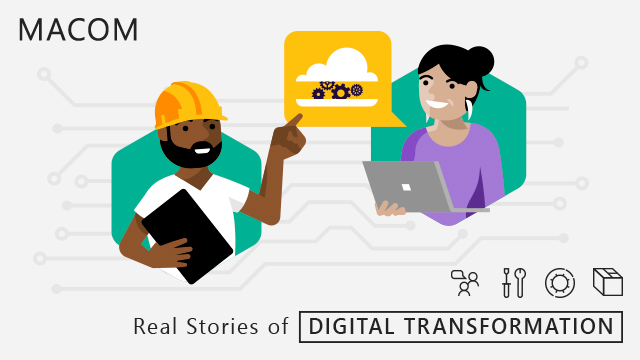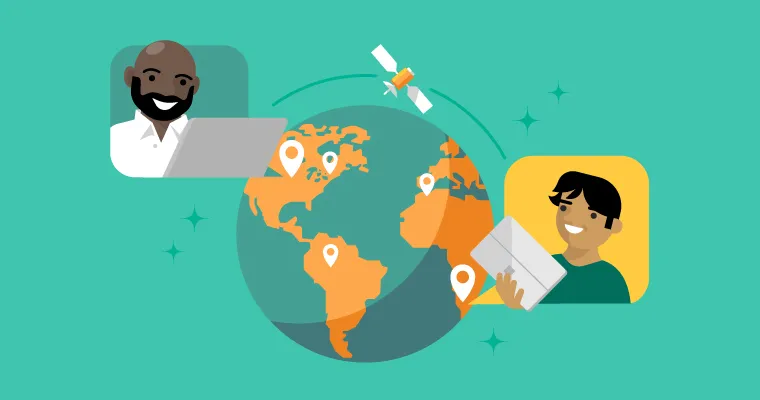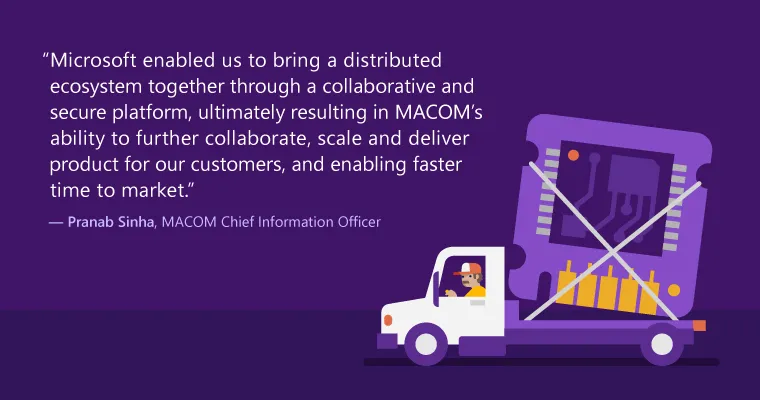
How MACOM’s next-generation technology enablement starts in house
Coming on board as MACOM’s new Chief Information Officer, Pranab Sinha was tasked with reimagining IT across the global enterprise. Examining the 65-year semiconductor company’s history, next-generation technologies, processes, platforms and employees, Sinha decided it was time for MACOM’s already innovative organization to experience its own digital transformation. After evaluating all possible partnership options, he knew Microsoft, a company driven to providing next-generation digital platform solutions, was the perfect choice.
“MACOM sits at the component level in the supply chain and is actively looking to fulfill the needs of our customers who are in turn looking to fulfill the increasing demand of today’s consumers,” explains Sinha. “We strive to enable them with the best products and technology available, and an overall satisfying buying experience. This means taking our internal processes to the next level.”

Digital transformation: technology enablement starts at home
MACOM has a strong commitment to enable a better-connected and safer world through breakthrough semiconductor technologies and solutions for optical, wireless, and satellite networks. Their technologies increase the speed and coverage of the mobile Internet and enable fiber optic networks to carry previously unimaginable volumes of traffic to businesses, homes, and data centers. Through these high-performance analog semiconductor solutions, MACOM is enabling next-generation communications infrastructure build-outs across a broad array of customers and applications.
As a company, MACOM has undergone rapid evolution in recent years. Since 2012, on top of organic growth, they’ve bolstered their business through the acquisition of a dozen separate entities, each one bringing its own set of technology, tools, and vendors. These acquisitions resulted in a distributed ecosystem across MACOM’s thirty plus locations, and a deep and wide supply chain. Enabling a set of strong collaboration capabilities in this highly distributed environment was essential.
It made sense that phase one of MACOM’s digital transformation should focus on the fundamentals of IT technology enablement and begin with a consolidation of tools.
With the global standardization on Microsoft platforms, including Secure OneDrive and Office 365, MACOM seamlessly created a new level of collaboration, sharing of content, and co-authoring across the enterprise. They eliminated storage and backup issues altogether.
Driving the enterprise data into Microsoft Azure gave the added benefit of increased data resiliency and protection. Microsoft’s Active Directory facilitated a single sign-on foundation for managing identity and credentials, improving the process of new product development from kickoff through production release, while further securing IPs. Windows Defender was installed to monitor for abnormal behavior, attacks, malware, and identify theft. “Microsoft enabled us to bring a distributed ecosystem together through an integrated and secure platform, ultimately resulting in MACOM’s ability to further collaborate, scale and deliver product for our customers, enabling faster time to market,” said Sinha.

The future of transformation: increased system reconciliation
As phase one of MACOM’s digital transformation wraps up, the company is already taking steps to launch phase two. This phase will focus on business transformation—driving the digitization of business procedures to build deeper customer engagement, with the goal of optimizing MACOM’s supply chain processes for better operating leverage.
MACOM’s digital progress won’t stop here—this fast-paced company will continue to benchmark and evaluate its enterprise against competitors. The goal is to provide continuous improvement, increased efficiency, and optimal security. As the demands of the industry continue to evolve, MACOM is dedicated to enabling the next-generation of technology, starting with its enterprise and customers, and aided by its digital transformation partners at Microsoft.




